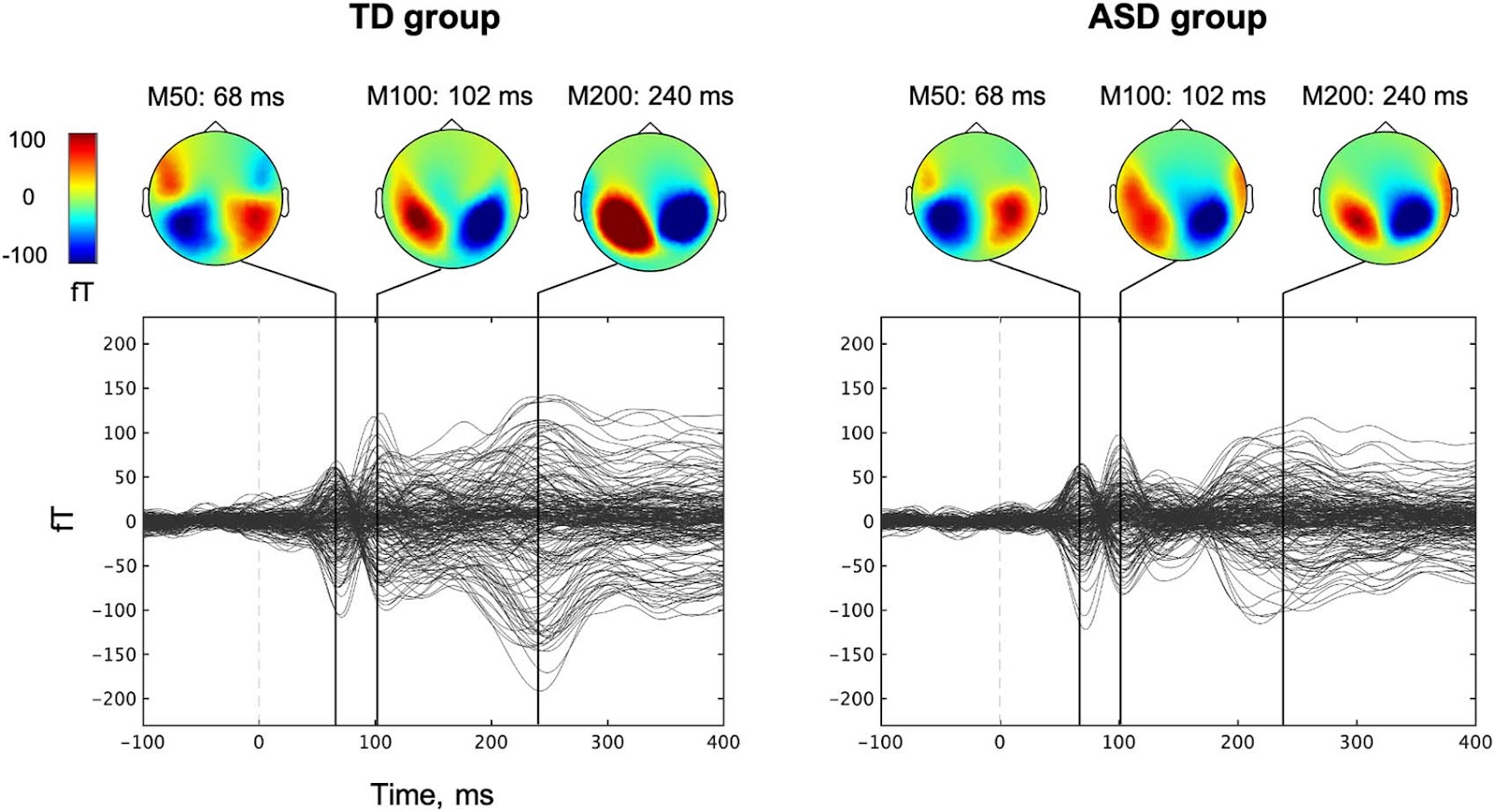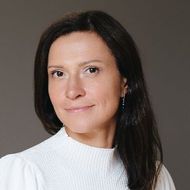Children with Autism Process Sounds Differently

For the first time, an international team of researchers—including scientists from the HSE Centre for Language and Brain—combined magnetoencephalography and morphometric analysis in a single experiment to study children with Autism Spectrum Disorder (ASD). The study found that children with autism have more difficulty filtering and processing sounds, particularly in the brain region typically responsible for language comprehension. The study has been published in Cerebral Cortex.
Autism, or Autism Spectrum Disorder (ASD), is a group of neurodevelopmental conditions that affect how a person perceives themselves, relates to others, and communicates. These conditions can vary widely, but people with ASD often have difficulty perceiving and processing sounds—for example, distinguishing speech in noisy environments, adapting to loud stimuli, or ignoring repetitive noises. Research indicates that these difficulties are linked to the functioning of the primary auditory cortex—the part of the brain’s temporal lobe responsible for basic sound processing. However, the precise ways in which auditory processing impacts language and communication in individuals with ASD remain poorly understood.
To explore the link between sound perception and language difficulties in children with ASD, researchers from the HSE Centre for Language and Brain, together with colleagues from Russia, the USA, and New Zealand, conducted a comprehensive study. They combined two methods: magnetoencephalography (MEG), which tracks brain activity in response to specific stimuli with millisecond precision, and morphometric analysis based on structural MRI data, which examines both the quantitative and qualitative features of the auditory cortex—such as its volume, thickness, and the shape of its gyri.
The study included 40 children—20 with typical development and 20 with a confirmed diagnosis of ASD. While the children listened to simple sounds—short clicks—scientists recorded their brain activity. The researchers focused on three components of the brain’s auditory response: M50, M100, and M200, which occur 50, 100, and 200 milliseconds after the sound is presented. Each of these components reflects a different stage of processing, ranging from basic perception to filtering and comprehension.
The most significant differences were found in the M200 component, which is involved in processing and filtering repetitive sounds. In children with ASD, this signal was significantly weaker, particularly in the left hemisphere, which is typically responsible for auditory perception and comprehension.

'We aimed to determine whether the perception of simple sounds is linked to language difficulties in children with ASD,' explains Olga Dragoy, Director of the HSE Centre for Language and Brain. 'Our results show that language difficulties in these children begin at a very early stage, when the brain first recognises and processes basic sounds.'
Anatomically, children with ASD exhibit two features: the auditory cortex in their left hemisphere is thinner, and the gyri are more curved and deeper. It was found that the more pronounced these differences, the greater difficulties children have with language comprehension and communication.
'The auditory cortex in the left, "linguistic" hemisphere helps children not only distinguish sounds but also learn to comprehend language and speak,' explains Alina Minnigulova, Research Fellow at the HSE Centre for Language and Brain. 'Perhaps it develops differently in children with ASD, which in turn affects their ability to comprehend language. Studying the relationship between auditory processing and language skills can aid in early diagnosis and the development of new educational and therapeutic approaches for children with ASD.'
The study was conducted with support from HSE University's Basic Research Programme within the framework of the Centres of Excellence project.
See also:
Fifteen Minutes on Foot: How Post-Soviet Cities Manage Access to Essential Services
Researchers from HSE University and the Institute of Geography of the Russian Academy of Sciences analysed three major Russian cities to assess their alignment with the '15-minute city' concept—an urban design that ensures residents can easily access essential services and facilities within walking distance. Naberezhnye Chelny, where most residents live in Soviet-era microdistricts, demonstrated the highest levels of accessibility. In Krasnodar, fewer than half of residents can easily reach essential facilities on foot, and in Saratov, just over a third can. The article has been published in Regional Research of Russia.
HSE Researchers Find Counter-Strike Skins Outperform Bitcoin and Gold as Alternative Investments
Virtual knives, custom-painted machine guns, and gloves are common collectible items in videogames. A new study by scientists from HSE University suggests that digital skins from the popular video game Counter-Strike: Global Offensive (CS:GO) rank among the most profitable types of alternative investments, with average annual returns exceeding 40%. The study has been published in the Social Science Research Network (SSRN), a free-access online repository.
‘We Describe Unwritten Languages’
Chiara Naccarato, Research Fellow at the HSE Linguistic Convergence Laboratory, graduated from university in Italy and came to Russia to study the languages of Dahgestan and the speech patterns of bilingual speakers. She notes the friendly atmosphere of the laboratory and the hospitality of the people of Daghestan.
HSE Neurolinguists Reveal What Makes Apps Effective for Aphasia Rehabilitation
Scientists at the HSE Centre for Language and Brain have identified key factors that increase the effectiveness of mobile and computer-based applications for aphasia rehabilitation. These key factors include automated feedback, a variety of tasks within the application, extended treatment duration, and ongoing interaction between the user and the clinician. The article has been published in NeuroRehabilitation.
'Our Goal Is Not to Determine Which Version Is Correct but to Explore the Variability'
The International Linguistic Convergence Laboratory at the HSE Faculty of Humanities studies the processes of convergence among languages spoken in regions with mixed, multiethnic populations. Research conducted by linguists at HSE University contributes to understanding the history of language development and explores how languages are perceived and used in multilingual environments. George Moroz, head of the laboratory, shares more details in an interview with the HSE News Service.
Slim vs Fat: Overweight Russians Earn Less
Overweight Russians tend to earn significantly less than their slimmer counterparts, with a 10% increase in body mass index (BMI) associated with a 9% decrease in wages. These are the findings made by Anastasiia Deeva, lecturer at the HSE Faculty of Economic Sciences and intern researcher in Laboratory of Economic Research in Public Sector. The article has been published in Voprosy Statistiki.
Scientists Reveal Cognitive Mechanisms Involved in Bipolar Disorder
An international team of researchers including scientists from HSE University has experimentally demonstrated that individuals with bipolar disorder tend to perceive the world as more volatile than it actually is, which often leads them to make irrational decisions. The scientists suggest that their findings could lead to the development of more accurate methods for diagnosing and treating bipolar disorder in the future. The article has been published in Translational Psychiatry.
Scientists Develop AI Tool for Designing Novel Materials
An international team of scientists, including researchers from HSE University, has developed a new generative model called the Wyckoff Transformer (WyFormer) for creating symmetrical crystal structures. The neural network will make it possible to design materials with specified properties for use in semiconductors, solar panels, medical devices, and other high-tech applications. The scientists will present their work at ICML, a leading international conference on machine learning, on July 15 in Vancouver. A preprint of the paper is available on arxiv.org, with the code and data released under an open-source license.
HSE Linguists Study How Bilinguals Use Phrases with Numerals in Russian
Researchers at HSE University analysed over 4,000 examples of Russian spoken by bilinguals for whom Russian is a second language, collected from seven regions of Russia. They found that most non-standard numeral constructions are influenced not only by the speakers’ native languages but also by how frequently these expressions occur in everyday speech. For example, common phrases like 'two hours' or 'five kilometres’ almost always match the standard literary form, while less familiar expressions—especially those involving the numerals two to four or collective forms like dvoe and troe (used for referring to people)—often differ from the norm. The study has been published in Journal of Bilingualism.
Overcoming Baby Duck Syndrome: How Repeated Use Improves Acceptance of Interface Updates
Users often prefer older versions of interfaces due to a cognitive bias known as the baby duck syndrome, where their first experience with an interface becomes the benchmark against which all future updates are judged. However, an experiment conducted by researchers from HSE University produced an encouraging result: simply re-exposing users to the updated interface reduced the bias and improved their overall perception of the new version. The study has been published in Cognitive Processing.




